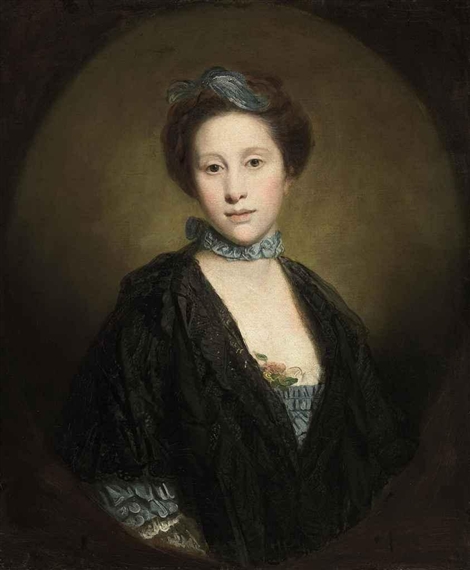

Louisa St John was born c1744 just as building work on Lydiard House drew to a close. The only surviving daughter of John, 2nd Viscount St John and his wife Anne Furnese, Louisa was born when the St Johns were busy on construction work on both their London and Lydiard homes. But with the death of her mother in 1747 and her father soon after the little girl grew up away from the remodelled Palladian mansion house in Lydiard Tregoze, Wiltshire.
In his memoirs Louisa’s son William states that his parents met in 1759 and that his mother was extremely young at the time of her marriage. With only an approximate birthdate to go on, it seems possible that Louisa was as young as 15 when she met her future husband and only 16 when she married William, 1st Baron Bagot at Wroxton, Banbury on August 20, 1760.
William served as MP for Staffordshire from 1754 to 1780. His son describes him as ‘a firm Tory and ever a most zealous supporter of Church and King. From the Administration of Lord Bute to the end of his life, he invariably refused all offers of place and preferment; though frequently and anxiously pressed at different times, and by various Ministers.’
The Bagot family seat at Blithfield in Staffordshire had belonged to the family since the 14th century. Louisa and William also had a home in Bruton Street, Mayfair.
In the summer of 1773 Louisa, heavily pregnant yet again, left the swelter of London for Blithfield to await the birth of her latest baby. Her four children, Louisa 11, Edward 10, Walter 7 and five year old Barbara were already enjoying their escape to the country. Little did the expectant mother suspect the tragedy that lie ahead.
Scarlet fever swept through the family at the big house and all four children caught the malignant and fatal disease. Across three days in the month of June three of the children died, Edward, Walter and little Barbara, only eldest daughter Louisa survived. In the 18th century a child’s life was so easily snuffed out and even the privileged upper classes had little defense against the deadly scarlet fever.
Louisa gave birth to a son on September 11. But this was not the end of the heartache she had to endure.
Louisa would go on to have four more children, Hervey born in 1777, Henrietta in 1780, Charles in 1781 and Richard in 1782. In 1787 yet again Louisa had to nurse her children through an outbreak of scarlet fever. Hervey, who had so recently celebrated his 10th birthday, died on May 31 and was buried in the churchyard at St Nicholas, Chiswick on June 2.
Louisa’s husband William died in 1798 aged 71. She survived him by more than 20 years, dividing her time between the estate at Blithfield where her eldest surviving son then resided, and a house at Brook Street.
Louisa herself is described as having a delicate state of health, no doubt further weakened by repeated pregnancies but her son makes an intriguing comment. Towards the end of her life her constitution improved and for many years before her death she enjoyed a much better state of health. Married when little more than a child perhaps having eventually gained her independence for the first time saw her general well being improve as a consequence.
Louisa wrote her own will on January 1, 1818, a document which later needed the verification of her handwriting. To her daughter Louisa, the only survivor of that devastating outbreak of scarlet fever, she leaves a monetary bequest and ‘my pair of Diamond Ear rings all my books in Town and here the little cabinet in Town given me by my brother John and a small heart set round with Diamonds containing the hair of my three four children deceased.’
Louisa makes her eldest son executor and refers to him constantly as ‘dear William’ the child born just weeks after her great loss.
In this eulogy to his parents William concludes – “This best of women, most exemplary of wives and most affectionate of mothers, expired at Blithfield, upon the 4th February 1820, and lies buried there with her much revered husband.”